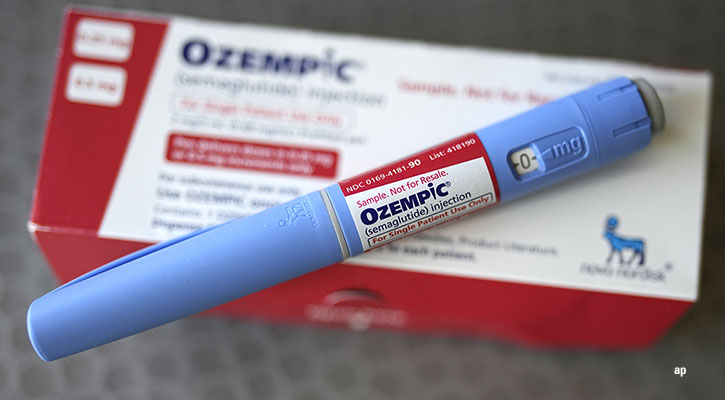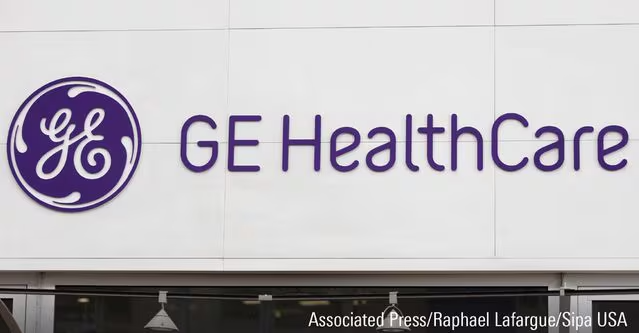
Pharmaceutical investing has seen huge moves in the industry’s stocks over the past year, with one area grabbing particular attention: obesity drugs.
Since the end of 2022, the booming market – and potential for massive growth – for obesity drugs has led to big rallies for the stocks of the two manufacturers leading the race to market: Novo Nordisk (NOVO B), producer of Ozempic and Wegovy, and Eli Lilly (LLY), which manufactures Mounjaro and Zepbound. Both stocks are posting their biggest gains when it comes to year-to-date performance since 1997.
The challenge is that both stocks currently trade in overvalued territory, according to Morningstar analysts. Investors looking to put new money to work in companies developing products in this potentially significant market must decide which of the more attractively valued competitors are best positioned to muscle their way in.
And with a new stream of studies being published, like Wegovy’s longest clinical trial to date, comes increased tensions between the drugmakers.
“We think current share prices do not properly account for expected price declines and competition, let alone the risk of patients discontinuing therapy due to tolerability, cost, or long-term safety issues,” says Karen Andersen, healthcare strategist at Morningstar.
Other Big Pharma companies looking to gain traction with their own obesity drugs include Roche (RHHBY), Pfizer (PFE), and Amgen (AMGN).
Key Obesity Drug Stocks and Their 12-Month Performance
• Novo Nordisk: 60.6%
• Eli Lilly: 78.1%
• Pfizer: -17.9%
• Amgen: 44.7%
• Roche: -14.7%
Obesity Drugs’ Big Impact on Pharma Stocks
Amid the obesity epidemic in the United States, pharmaceutical companies have been attempting to develop effective treatments for years. “I don’t think we’ve ever seen this sort of level of innovation,” says Damien Conover, director of healthcare research for Morningstar. “Historically, obesity has been an area of a lot of failed drug development. It’s always dangerous to say, ‘This time, it’s different.’ But this time, it really does seem different.”
Andersen adds: “So it was a sort of slow realization after the data, approval, shortages … and then it took off. I think we had all been expecting less, given that the launch of Novo’s previous obesity drug, Saxenda, wasn’t very successful – albeit with about 5% weight loss.”
However, investors have now definitely taken note, changing the landscape of pharma stocks. That came in part as Lilly has seen unparalleled efficacy in its weight-loss drug therapy, and its stock reflects that progress with its big 2023 rally. Meanwhile, Novo has become the largest company in Europe as measured by market capitalisation.
Obesity Drug Market Potential
Underlying these gains are expectations of massive growth for these drugs. Conover and Andersen project that the global market for obesity drugs will be US$120 billion by 2031 and most of the market will be relatively split between Novo and Lilly. The overall market for the kinds of treatments employed in these medications, which are known as GLP-1s and are also used to treat Type 2 diabetes, is seen as even larger, at some US$170 billion.
Conover and Andersen forecast that over 25% of obese Americans and 15% of overweight Americans will receive treatment in 10 years, and the vast majority will receive branded GLP-1 therapies. They predict the bulk of those sales will go to Novo and Lilly.
Obesity Drug Stock Variables
With new gates being opened for these drugs, investors have multiple variables to consider when it comes to stocks that can benefit.
One of the biggest factors will be pricing, both the prices manufacturers can charge and what end consumers pay after insurance. Both Lilly’s Zepbound and Novo’s Wegovy have a listed monthly price over US$1,000. But this is not necessarily reflective of what the typical consumer will be billed; the net payment could be discounted by as much as 79%. Such pricing could make a big difference in sales.
“It’s such a big market that you don’t need to change the penetration levels that much and you would have substantially different projections,” says Conover.
Meanwhile, already-intense competition is being fuelled by a steady stream of studies of drug effectiveness. The first-of-its-kind clinical trial examining the long-term effects of Novo’s Wegovy found that people on the drug maintain weight loss for up to four years, on top of reducing the risk of heart disease. These findings could act as a catalyst for insurance companies and governments to cover Wegovy more liberally.
That competition is part of the reason Conover and Andersen expect a substantial pricing decline over time. They estimate companies are currently charging an average of US$7,000 for obesity drugs, but that will likely decline to under US$3,000 by 2031.
“Competition and efforts to expand commercial – private payer – reimbursement contracts tend to lead to lower prices at bigger volumes,” Andersen says.
Although many unforeseen corners could lie ahead, one thing is clear: Lilly and Novo revolutionized the weight-loss landscape through years of continual therapy improvements. “They had been on this steady path until they got to the point where this obesity data came out,” Andersen explains. “It had somehow broken through this barrier for prior obesity drugs, since their efficacy was undeniable, and it really turned a corner.”
Which Obesity Drug Stocks Should You Buy Now?
“Novo and Lilly are kind of doing their own thing in the stock market, and really in innovation,” says Conover. “They are bringing out some of the most powerful new drugs for sales generation, in our estimation.”
Andersen says, “I think we’re at a point in this market where it’s accepted that Novo and Lilly are both strong players and poised to benefit incredibly. I think it would be tough to really take down either, unless there was some drastic reduction in supply or a massive safety issue that we somehow didn’t see until now.”
However, for investors, there are valuations to consider. Lilly is currently trading at a price/fair value ratio of 1.45, meaning it is 45% overvalued compared with Conover’s fair value estimate of US$540. Meanwhile, Novo has a price/fair value ratio of 1.55, based on Andersen’s fair value estimate of US$86.
We expect Lilly to partly elevate capacity constraints for Mounjaro and Zepbound in the second half of the year,” Conover says. “Lilly expects to increase the drugs’ production by 50% by the end of the year. With demand outstripping supply, we expect Lilly to sell what it can produce.”
Pfizer has been considered a significant contender, but recently it provided lower-than-expected 2024 guidance, which brought its Morningstar fair value estimate for the company’s stock from US$47 to US$42 per share. The company’s 2024 projection “included covid-19 product guidance of US$8 billion, which was US$5 billion lower than our expectation,” Conover says.
However, Pfizer’s diverse line of drugs and vaccine provide for a steady cash flow, and the market is still significantly undervaluing its stock price, with the last closing price being US$28.50.
Another aspirant is Amgen. “They are committed to entering the obesity market—either with the lead candidate (similar to Lilly’s Zepbound, it is targeting GLP-1 and GIP hormones) or additional drugs that are in phase 1 and preclinical studies,” says Andersen. “We expect phase 2 data from the lead AMG133 program in the second half of 2024. The key selling point so far, based on phase 1 data, could be that it requires less frequent administration—it could be administered monthly, instead of the weekly Zepbound—and may lead to longer maintenance of weight loss after stopping therapy.”
In addition, Andersen says Amgen’s offering has showed “compelling” speed of weight loss. “It will be interesting to see longer-term data to see the final plateau of weight loss.” She adds that, given the minimal data so far from the company, “Amgen is sort of a wild card, as it could either be best-in-class or encounter issues with tolerability or safety that make it less compelling.”
In the first quarter, Amgen’s sales grew 22%, raising its fair value estimate to US$317. Amgen’s stock is also undervalued, currently trading at US$314.54.
Then there is Roche, which in 2023 entered the fray with the acquisition of private biotechnology company Carmot, which has three clinical-stage obesity drugs in the works. “Investors might be better served by taking a less focused approach toward investing in obesity stocks and consider a firm like Roche, where we like the overall portfolio and investors get some exposure to new obesity drug development,” Conover says.
Here’s a look at Morningstar’s take on key obesity drug developers and their stocks:






:quality(80)/cloudfront-us-east-1.images.arcpublishing.com/morningstar/KD4XZLC72BDERAS3VXD6QM5MUY.png)















